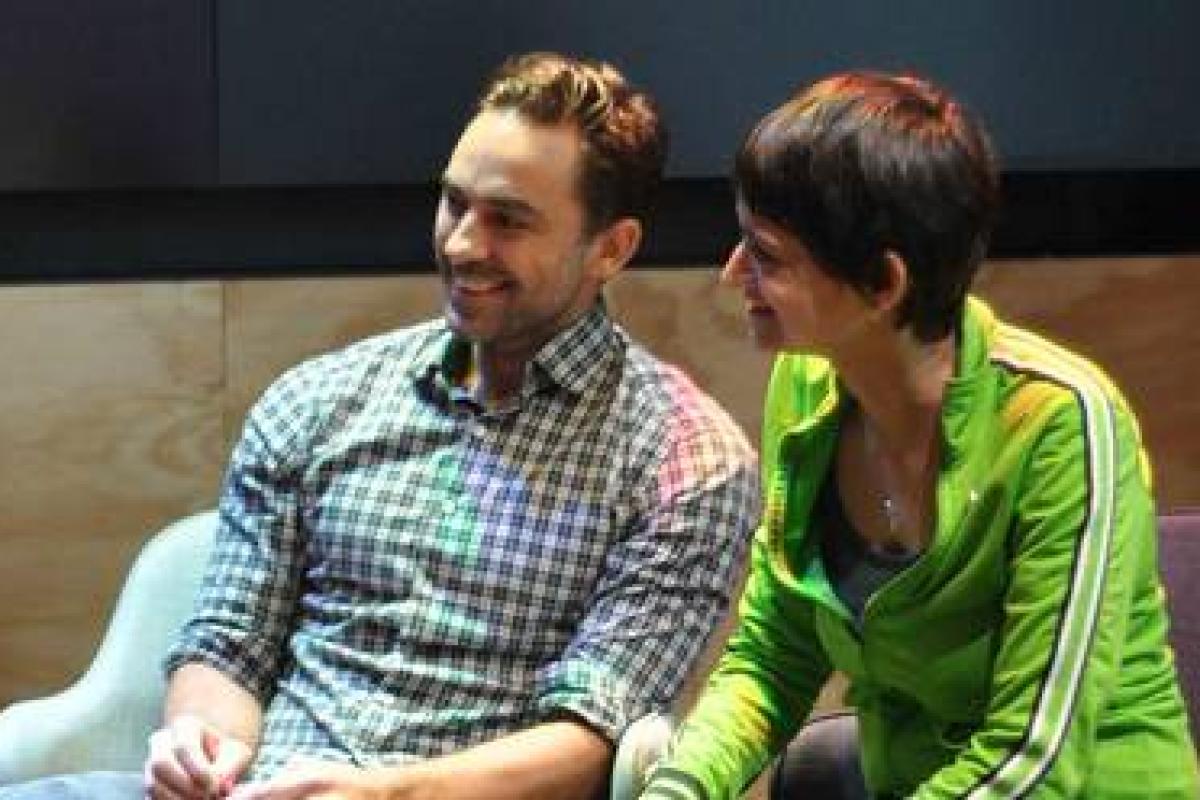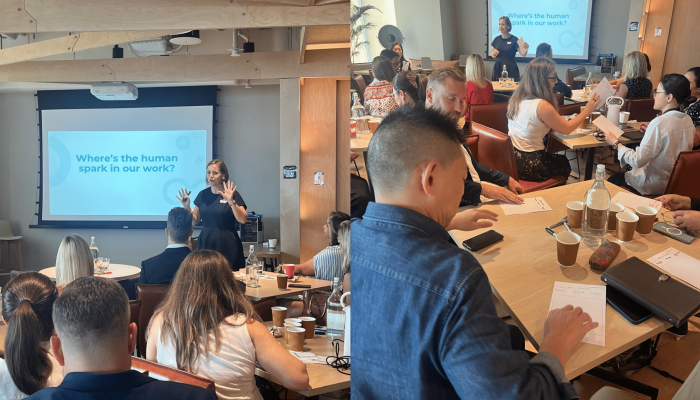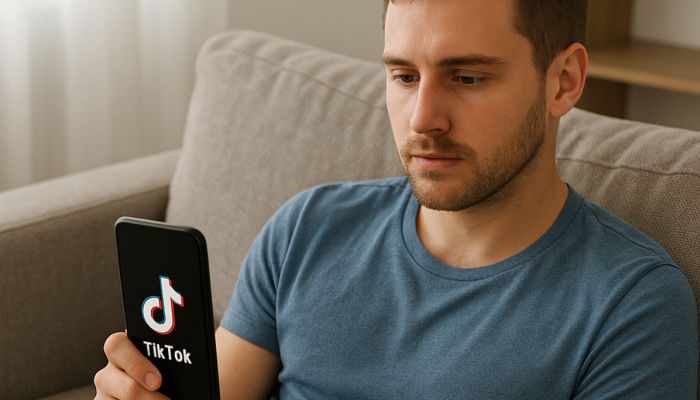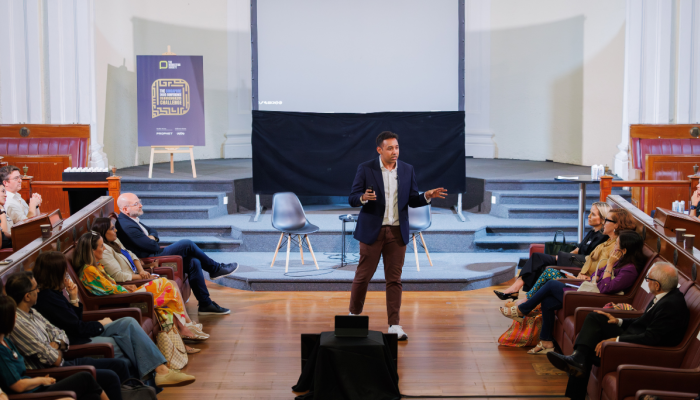Simon Kahn, Google’s APAC chief marketing officer, recently hosted three executives from pioneering brands to get their takes on storytelling in the digital age.
The guests—Bulbul Khera, senior marketing director at Nike Southeast Asia; Rafael Scislowski, APAC senior director of marketing at LEGO; and Sesha Kanthamraju, executive director of communications and citizenship at The Walt Disney Company Southeast Asia—touched on a few key points for brands to consider as they develop their own stories:
-
Storytelling continues to be essential for building emotional connections: Despite marketing’s ever-changing landscape, the core elements of powerful storytelling—relatable heroes, authenticity, and a great hook—have not changed.
-
Take global local: Global teams can provide the framework for a campaign, but a local lens is what will make an initiative resonate meaningfully.
-
Involve the consumer in the journey: Enabling consumers to play an active role in the storytelling drives authenticity, relatability, and paves a path for fans to become brand advocates.
-
Digital is a core element in the brand experience: Today’s consumers expect engagement with brands to be “always on,” on demand, and experiential with the help of digital.
Here is their conversation:
Q: Let us start off by sharing what storytelling means to you and how you apply it to brand building.
Sesha [Disney]:
At Disney, everything is about storytelling and those special moments that become lifelong memories. We create interesting and relevant stories by understanding the experiences of our audiences young and old. Stories today reflect the world we live in; they’re more dynamic and diverse. For instance, it’s no longer relatable to show “a princess waiting for a prince to arrive.”
Rafael [LEGO]:
At LEGO, it’s about inspiring the builders of tomorrow and how we can best create a story that’s engaging and brings parents and their kids into the world of LEGO.
Bulbul [Nike]:
Storytelling for Nike is about taking our consumers on a journey. Storytelling is about being real and relatable. Today, we can use different mediums, especially digital, to communicate and develop this story over time.
The world of Nike is like being part of an unscripted drama—that last second left in the game where the ball is suspended in midair. For us, that moment of tension is an added advantage. We do not plan it, but it happens, and when that moment of release comes, the authenticity of the emotion is engaging because it’s so real.
Q: To what extent do you personalize the global brand ethos for your users? How do you find a balance between the global brand story while still being relevant to local markets?
Bulbul: An example of how we translated a global thought into something locally relevant was what we did during the World Cup. We took a global campaign called “Risk Everything,” to Bangkok. The core insight of the campaign was about rivalry, and in Bangkok, the Chao Phraya River divides the city into the East and the West. So we thought, “let’s do a competition, East versus West.” We created a floating football field to host the finals of a local football match. The initiative gave the winning team bragging rights to “owning the river,” and playing in front of the temples by the river was also a beautiful memory that we got to give the kids.
Most of the time, the natural gravity is to say that “global does not know our market, so we have to do something different.” But sometimes you can connect better with the local audience by adapting from a global insight, rather than creating a campaign from the ground up, which is far more resource-intensive.
Sesha:
We follow the basics of storytelling, from a marketing standpoint, which needs to answer these four questions:
1. Is it new? If it is not, people aren’t interested in the story.
2. Is it important? If so, what about it makes it important?
3. Is it timely?
4. Is it interesting?
You can apply this framework anywhere, and usually a local nuance or idiom is what provides interest.
Q: To build on that, does Disney tend to focus on different characters or parts of a story for different markets?
Sesha:
Take Marvel, for example. When Thor came out, the whole world was crazy about Thor, but for some reason Southeast Asia loved Loki. Something clicked about the guy. So when we interact [with Southeast Asia], regardless of the medium, we use Loki.
Q: My kids watch hours and hours of LEGO unboxing. What are your thoughts on user-generated content (UGC)? Do you encourage it, and if so, how?
Rafael:
The toy vertical has a huge amount of content. We do everything we can to enable fans and supergroups to run their own blogs and host events, whether it’s providing them with bricks or turning them into LEGO-certified master builders. Having said that, we do not want to take over the UGC aspect. We let it flourish by providing the community with what they need.
Right now, we are creating a more structured “always-on” strategy. Previously, it was up to the brand manager’s discretion on how to best leverage UGC, but we are looking to build out a content calendar that involves the right people to create an authentic experience that meets our business objectives. UGC is a big priority for us, and we are looking to activate it further in 2018. Leveraging YouTube and its ecosystem of creators will be an essential part of our plans going forward.
Q: Given the many different mediums available today, including non-traditional channels like social and video, how do you measure the impact of your campaigns?
Rafael:
We have pretty rigorous post-campaign assessments. After every campaign, the market compiles the qualitative and quantitative aspects to assess performance. In addition to that, we have a digital dashboard across APAC to see actual versus planned spend on digital, views, clickthroughs, engagement, and such. We work with Google and our media partners to keep a pulse on how our digital media and key platforms perform with weekly check-ins on performance, which allows us to adjust. At the same time, we will do the standard biannual deep dive to see how effectively our dollars are evolving.
There is also an emotional aspect that we look at, which often comes through in the comments we get. There is a scientific way of looking at reach and views, but the feedback we get directly from consumers is critical. This combination of science and emotion is how we evaluate success.Bulbul:
Sesha:
For us, it’s important that we’re not building a one-off but a franchise, a platform where the story continues “beyond.” We use digital as a medium to drive relevance and to eventually move people beyond the cinema. When the consumer watches the film and then goes on to buy a related toy or game, that is when we know fan-building is happening.
With the handheld device, there is an added dimension of intimacy that makes content more personal. Gaming, for example, has become a great way of pulling people in and making them feel like they are part of that world. It’s no longer about just saying, “Here’s a story, go watch it.” Rather, it’s saying, “Here’s a story, and you could be part of it.”
Q: Mobile seems like the new frontier for brands, and the APAC region is leading in that space.
Rafael:
Definitely. We have noticed declines on our traditional platforms, and a lot of that is related to video demand and changing mobile habits. We augment the physical play experience with mobile apps, and when we come up with something new, we try to integrate a digital component that enhances the overall experience. We augment the physical play experience with mobile apps, so when we look at our new product innovation, there is always an element of digital integration that enhances the overall experience.
The biggest thing we have done recently is launch LEGO Life, a safe app for kids to share their ideas, build creations, and form supergroups. For us, the mobile environment is key to developing a relationship with our fans and engaging our loyal users in a deeper way through new experiences. Secondly, our new product BOOST, makes building and coding fun, providing the opportunity to build five different robots, along with an entertaining app that turns learning into a game
This article originally appeared on apac.thinkwithgoogle.com



